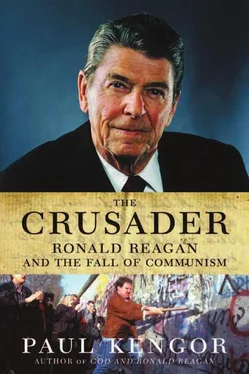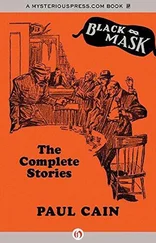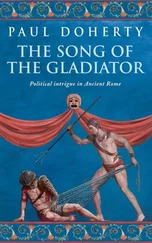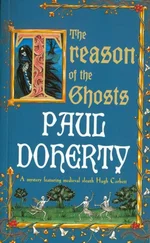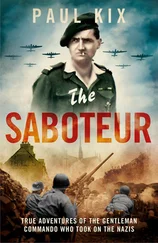Further complicating matters was the fact that while politics were his passion, at this stage they did not pay him anything. Despite his considerable earnings of the last few years, he still needed to earn a salary, and after his time at SAG came to an end, acting opportunities became more difficult to come by. The loss of his movie success threw him for a loop, and by all indications, this was the most difficult period of the Crusader’s life, a time when, for the first time, personal and professional failure seemed like a possibility.
While he was crushed by the breakup with Wyman, it was during this time that he met the woman that would forever change his life: Nancy Davis.
In 1952, the life of the forty-one-year old turned around when he married Nancy, who, more than anyone, supported him totally, including his political ambitions. She was head over heels for her husband. “Ronnie is my hero,” she glowed. “My life began when I got married. My life began with Ronnie.” 1She watched his back for him, distrusting seemingly nearly everyone he trusted, and, from his front, encouraged him. She was willing to follow him wherever it took to ensure that his career was once again fruitful.
Though his marital life was on the right track, he was still faced with the difficult reality of his career. In February 1954, unready to say goodbye to show business for good, Reagan turned to a stint in a Las Vegas vaudeville act, at the aptly named Last Frontier hotel, to provide him with the income he needed to keep his career afloat. 2Despite this apparent setback, Reagan remained resolute, telling his new bride that God had something greater in store. For Reagan, who had always felt that Providence had a plan for him, this was merely a brief stop on an otherwise upward trajectory.
Once again Reagan’s optimism was vindicated; he was not in Las Vegas for long. Soon after his move, CBS began considering Reagan as a host for its programming. While they originally wanted him to host the popular Omnibus, which up until that point had been hosted by the future Masterpiece Theatre host, Alistair Cooke, CBS executives found use for Reagan as host of the new show GE Theatre. Reagan struck CBS as quintessentially American and ideally suited for this emcee type role. It was a role that Reagan would come to know well over the next several years and it was a position that he would inhabit from September 1954 to August 1962.
Reagan was already well known from his movie days. This new position provided him with unprecedented exposure, making him (according to surveys) one of the most recognized names in all of America—up there with President Eisenhower. By the mid-1950s, two-thirds of American homes already owned at least one TV set, and millions of families sat perched in front of “the tube” for hours on end, terrifying the movie industry—which was losing clients at the theater. That was fine with Reagan, who was positioned perfectly for the shift; he rode the wave. Moreover, there were very few channels on the dial in 1954. The typical American could not turn on the TV on a given evening without seeing Ronald Reagan’s face in the living room.
Adding to Reagan’s notoriety, GE Theatre was a smash. The show took off, eclipsing I Love Lucy only weeks into its debut, and attracting the very best actors: Ethel Barrymore, Joseph Cotten, Bette Davis, Jimmy Stewart, James Dean, Natalie Wood, Alan Ladd, Jack Benny, Lee Marvin, Charles Bronson, Angie Dickinson, Vincent Price, Walter Matthau, Charlton Heston, Donna Reed, Greer Garson, David Janssen, to name a few. 3These were megastars at the height of their careers. Reagan often acted alongside them, since he not only hosted GE Theatre but starred in more of its 200 episodes than any actor. The show also attracted top musical talent, like Judy Garland, Ethel Merman, Harry Belafonte, and Fred Waring and his Pennsylvanians. 4
According to Reagan, who was also supervisor of GE Theatre and involved in episode creation and development, it was the top show in the 9:00 pm slot for eight years. 5If it was not consistently number one each week, it was always near the top, and all of this exposure combined to make Reagan so popular that his face graced the cover of TV Guide twice—the November 22, 1958 and May 27, 1961 issues.
GE’S ANTI-COMMUNIST SPOKESMAN
Of course, Reagan was not about to let this TV experience interfere with politics. Like his movie career, he insisted that there be time for both the camera and anti-Communism, and throughout the latter 1950s and early 1960s, Reagan traveled the country as a spokesman for General Electric—part of his duties as GE Theatre host. During these travels, he toured GE plants around the country, where he visited with executives and employees and gave lunchtime and dinner speeches. While these speeches usually contained innocent, humorous anecdotes about Hollywood, they often became quite ideological, as Reagan laid out a litany of attacks against big government at home and abroad—especially in Moscow.
Despite this exciting new forum for his political ideas, not all of his political remarks at this time were made on GE tours. For instance, in a June 1957 speech at Eureka College, his first of many at his alma mater, Reagan’s battlefield rhetoric was on display, as was his sureness of an American responsibility to fight the bad guys in the red hats. Citing a possibly apocryphal story about the signing of the Declaration of Independence in Philadelphia, he quoted an unidentified man in the state house on that day. “Were my soul trembling on the verge of eternity, my hand freezing in death,” said the stranger allegedly, “I would still implore you to remember this truth: God has given America to be free.” Here, said Reagan, “was the first challenge to the people of this new land, the charging of this nation with a responsibility to all mankind. And down through the years with but few lapses the people of America have fulfilled their destiny.” 6Here again was a common Reagan refrain that God not only chose America to be free, but gave the nation that freedom with a larger responsibility to all mankind.
In that speech, he expressed aggressive words, telling his audience: “You are fighting for your lives. And you’re fighting against the best organized and the most capable enemy of freedom and of right and decency that has ever been abroad in the world.” He pointed to the 1930s, when he claimed that Communism came to Hollywood via a man he cryptically identified only as a technician who came to town “on direct orders from the Kremlin.” “When he quietly left our town a few years later the cells had been formed and planted in virtually all of our organizations, our guilds and unions. The framework for the Communist front organization had been established.” 7
Although most of these anti-Communist statements were made as Reagan toured the country for GE, he used GE Theatre on several occasions to air his views. An example of this occurred during a February 3, 1957 broadcast, in which he played a boxing trainer. At the close of the broadcast, Reagan stepped back into his host duty to give his customary goodbye and plug for GE products. This time, however, he put in a word for Hungarian refugees, fresh off the disaster of October–November when Soviet tanks, under orders from Moscow, rolled in and killed tens of thousands of Hungarians, causing a large number to flee the country. “Ladies and gentlemen, about 160,000 Hungarian refugees have reached safety in Austria,” reported Reagan to his huge audience. “More are expected to come. These people need food, clothes, medicine, and shelter. You can help.” He told his fellow Americans to send donations to the Red Cross or to the church or synagogue of their choice. 8Those Hungarians were Reagan’s heroes: the Captive Peoples of the Communist bloc suffering the sword of Soviet repression, and this was perhaps the Great Communicator’s first use of the TV bully pulpit on behalf of Eastern Europeans.
Читать дальше
